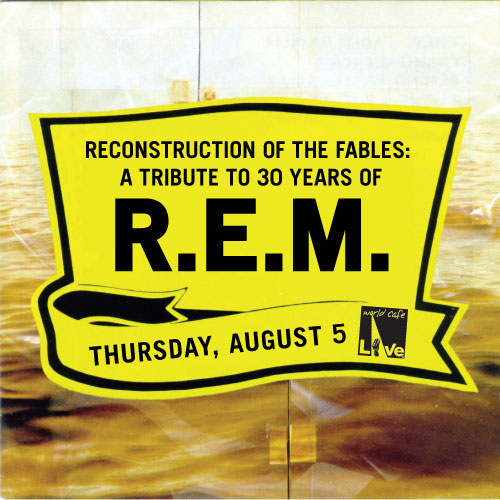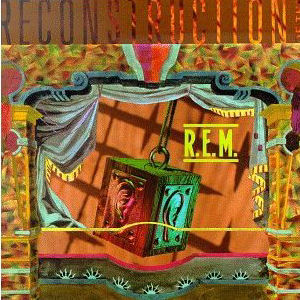
RELATED: Recording outside of the American South for the first time, R.E.M. imbued Fables of the Reconstruction with the spirit of its place of origin. What largely set early alt-rock bands like R.E.M. apart from the punk and post-punk movements with which they coexisted was how they rebelled against the present by signifying sounds and iconography from the pre-punk past, albeit in a recontexualized, postmodern fashion. In R.E.M.’s case, this tendency had been manifested in its early work by Peter Buck’s Byrdsian guitar jangle and in the band’s vague rural mystique, one that was provincial without being cliché. Fables of the Reconstruction delved further into the past than the band had ever journeyed before, conjuring up the spirit of a mythical South of nebulous antiquity as envisioned by the group—imagine a post-American Civil War South as if it had access to records made a century later—through a combination of potent musical signifiers (banjos and slower country music-inspired tempos matched up with Buck’s ever-present  jangle) and Michael Stipe’s fascination with the storytelling tradition of the region. From its connotation-heavy title to its timbres, Fables of the Reconstruction becomes a record about the pervading sense of place, one where listeners can practically hear the Southern Crescent railroad line chug along, feel the warm Georgia air, and see endless rolling fields of native agriculture as the band plays. Listeners can bear witness on this album to a major step in Stipe’s development as a lyricist. While still rooted in the oblique mumbles of past compositions, the songs on Fables of the Reconstruction constituted Stipe’s admitted first attempts at narrative writing. Stipe told NME in 1988 that the album was “pretty much my version of the storytelling tradition. Me playing the Brothers Grimm or Aesop.” Fables is loaded with all sorts of local eccentric characters that give the South its unique character, including dog kidnappers (“Old Man Kensey”), used car salesmen (the banjo-laden country-fied closer “Wendell Gee”), train conductors (“Driver 8”), and crazy old coots who divided their homes in two (“Life and How to Live It”). Stipe proves his mettle as a lyricist by being able to match his narrative fascinations with strong descriptive snippets of the everyday mundane, making lines like “I saw a treehouse on the outskirts of the farm / The power lines have floaters so the airplanes won’t get snagged” from “Driver 8” function as pure poetry. MORE
jangle) and Michael Stipe’s fascination with the storytelling tradition of the region. From its connotation-heavy title to its timbres, Fables of the Reconstruction becomes a record about the pervading sense of place, one where listeners can practically hear the Southern Crescent railroad line chug along, feel the warm Georgia air, and see endless rolling fields of native agriculture as the band plays. Listeners can bear witness on this album to a major step in Stipe’s development as a lyricist. While still rooted in the oblique mumbles of past compositions, the songs on Fables of the Reconstruction constituted Stipe’s admitted first attempts at narrative writing. Stipe told NME in 1988 that the album was “pretty much my version of the storytelling tradition. Me playing the Brothers Grimm or Aesop.” Fables is loaded with all sorts of local eccentric characters that give the South its unique character, including dog kidnappers (“Old Man Kensey”), used car salesmen (the banjo-laden country-fied closer “Wendell Gee”), train conductors (“Driver 8”), and crazy old coots who divided their homes in two (“Life and How to Live It”). Stipe proves his mettle as a lyricist by being able to match his narrative fascinations with strong descriptive snippets of the everyday mundane, making lines like “I saw a treehouse on the outskirts of the farm / The power lines have floaters so the airplanes won’t get snagged” from “Driver 8” function as pure poetry. MORE
PREVIOUSLY: Riddle Me This
